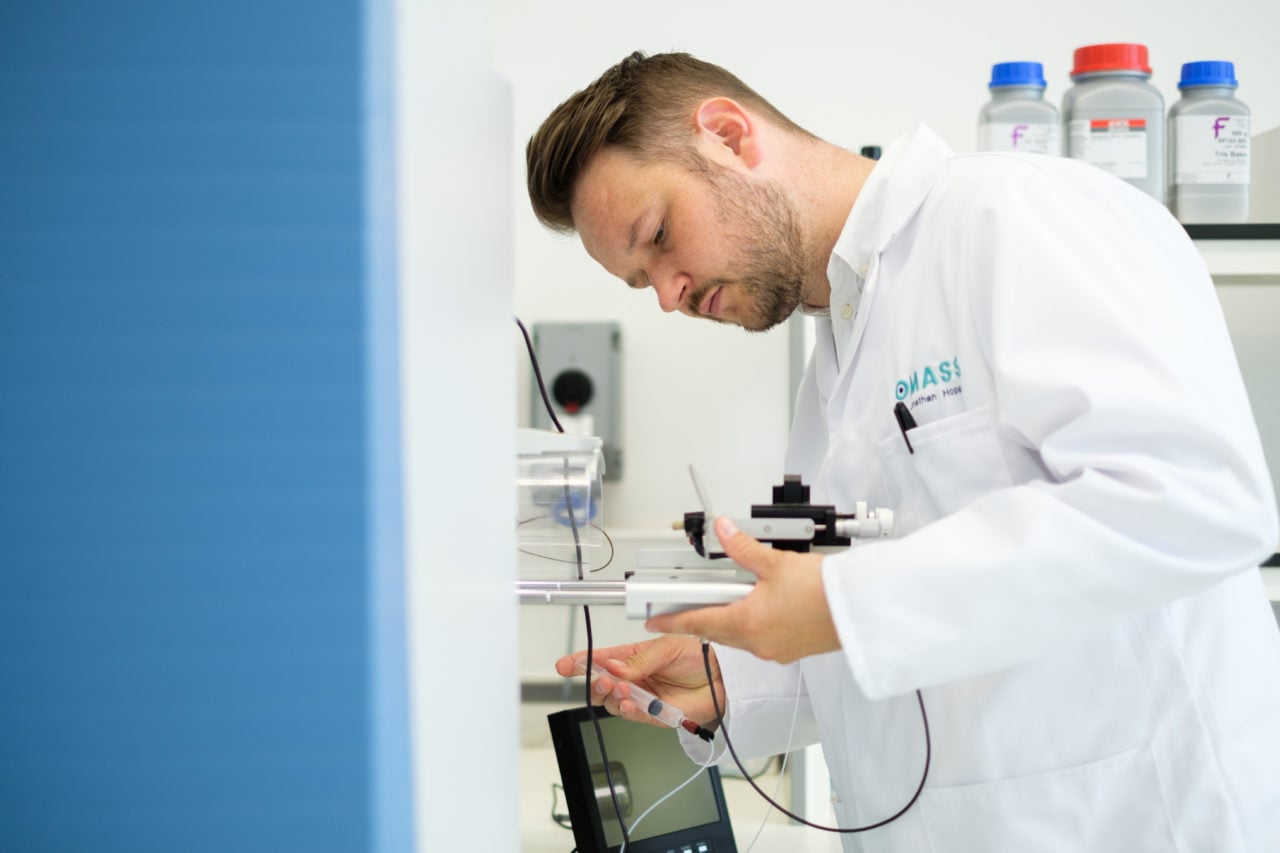A biotechnology company harnessing native mass spectrometry and other biophysical technologies to drive drug discovery in high definition. Using this technology allows OMass to interrogate not just the target but how it interacts with its native ecosystem, separate from the confounding complexity of the cell. The company was established in 2016 as a spin out from the University of Oxford, Department of Chemistry and backed by Syncona and Oxford Science Enterprises, having closed a $60m Series A funding round. Currently, we are advancing a pipeline of small molecule therapeutics in rare diseases and immunological conditions, targeting solute carriers, complex-bound proteins and GPCRs.

On forming OMass in 2016, we faced an urgent need to rapidly establish an independent research laboratory and we evaluated space at various science parks in the Oxford area. Our seed investment coincided well with the construction of the new wing of the Centre for Innovation and Enterprise (CIE) at University of Oxford, Begbroke Science Park. Begbroke provided an ideal location for a new company. The spaces in the CIE are modular and divided into individual rooms thus letting companies take a small chunk of space with the flexibility to add partitions as required for specific operations, including the installation of labs. The smaller fitout was performed relatively quickly, and this allowed us to build early research capabilities into the company after the initial investment, a critical factor in our early development.
Lease terms are also attractive, with companies who outgrow space or conversely downsize operations not bound to unsustainable terms without the option to serve notice. This is something that sets Begbroke apart from other parks offering space for early-stage companies. The Park also benefits from its close affiliation with the University of Oxford, providing services such as fully managed networks, firewalls, and access to a very capable IT department. The links to the University also mean that it is very well connected to the centre of Oxford with regular mini-bus shuttles to and from the city running throughout the day. This was essential for our employees who lived in Oxford.
OMass spent approximately 2 years at Begbroke Science Park – the modular nature of the layout allowed us to expand into a second room for additional office and meeting space – being able to do this within the same building was extremely useful. We raised a substantial Series A in order to completely pivot the company towards an independent drug discovery company, with the funding designed to establish in-house programmes and to build out an experienced team. As such, the rapid expansion required a much larger space to accommodate the increased operations, and this is something that was not feasible at Begbroke. At this point we moved to the Oxford Science Park and currently lease approximately 5,000 sqft of space in the Schrodinger building and have another 5,000 sqft of space at Nottingham’s BioCity where our Pharmacology and Immunology departments are based.
With great lab facilities being highly sought after in Oxford and the huge growth in spinout activities over recent years, staying informed about new facility developments is something all companies need to be aware of. Along with the BioEscalator space, I think Oxford University, Begbroke Science Park offers one of the most suitable infrastructures for new and emerging companies in the Oxford area.


